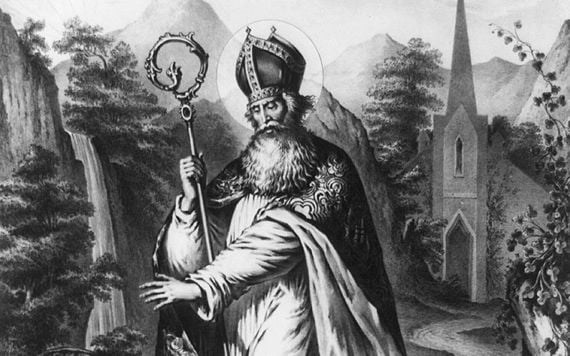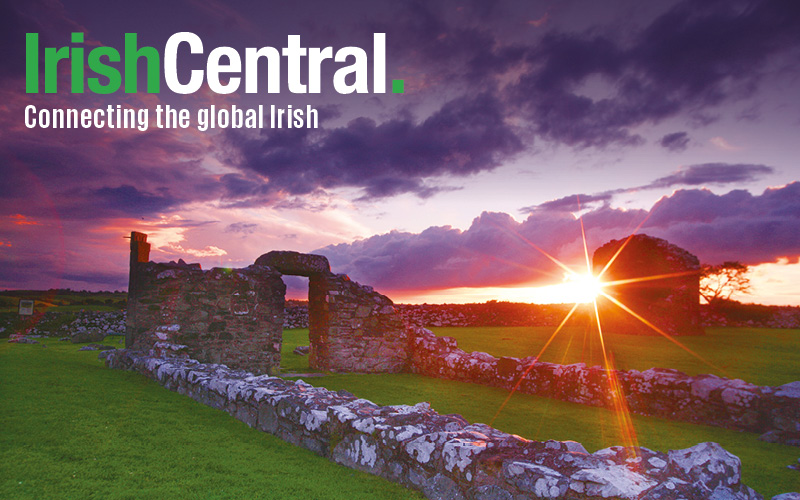Everything you need to know about St Patrick and Turin Castle
Turin Castle Ireland is a magnificent example of a medieval square-towered fortress. It was erected by the powerful Norman, De Burgo family who controlled a huge swathe of territory across principally, Mayo and Galway. The De Burgos or De Burcas as they became known in Irish or Burke or Bourke in English, consolidated their power by marrying into the Irish aristocracy; adopting Irish language and culture and becoming ”Hiberniores Hibernis ipsis” more Irish than the Irish themselves.
The De Burgos controlled this huge kingdom through a network of strategically placed castles inhabited by loyal family members. The land around Kilmaine was very fertile and proved particularly suitable for sheep farming. In the Barony of Kilmaine alone there were 41 castles, a line of which would appear to protect a valuable trade route for their ovine products, to Lough Corrib to Galway and then the open sea and ultimately, the burgeoning markets of continental Europe. This profusion and high concentration of castles would suggest that agriculture was on an industrial scale.
Read more: Where is the oldest St Patrick's Day celebration in the world?

St Patrick. Image: Library of Congress.
The orientation of Turin Castle Ireland is significant; as was common with important medieval buildings it was built in deference to an astronomical event or sacred landmark, in this case, it is the latter. In the Northwest corner of the Great hall there is a small room with a lancet opening at floor level. This small window can only be viewed through at floor level necessitating one to assume a kneeling position. Incredibly it is directly aligned with the summit of Croagh Patrick!
According to the Book of Armagh; Patrick proceeded to Mons Aigi (Croagh Patrick) intending to fast there for forty days and forty nights, following the example of Moses, Elias and Christ. Legend has it that St Patrick returned to Ireland in 441 AD on a mission to convert the Pagan Irish to Christianity.
To achieve this aim he would first have to demonstrate his God’s superiority over the ancient beliefs and superstitions of the natives. This was no mean feat, Irish beliefs were inextricably linked to nature and the Cosmos and mountains, especially of the conical variety, were viewed as immensely spiritual places. In this case the domain of Lugh, the all – powerful Sun God. The Christian interpretation of Patrick’s sojourn on the mountain became an epic battle between God and the Devil in the shape of hordes of tormenting demons with good eventually triumphing over evil.
Read more: If St. Brigid and St. Patrick had an argument

Croagh Patrick pilgrimage.
On two days of the year, April 18 and August 24 a most amazing phenomenon, known as “The rolling Sun” can be witnessed. If the summit of the mountain is clear the Sun can be observed to set on the peak and then appear to roll down the northwest flank of the mountain. This is best observed from a deliberately calibrated setting called the Boheh stone. The stone is also known as St Patrick’s chair and is positioned in a natural stone outcrop located on the Eastern slope of Croagh Patrick close to the village of Brackloon. The stone is profusely carved with bronze -age motifs covering virtually its entire area.
Turin Castle Ireland is located in the Barony of KIlmaine. Kilmaine is derived from the old Irish Cill meaning "Church" and "Mhean" meaning middle. It is believed that St Patrick established three churches in Kilmaine. The area in St Patrick’s time was controlled by the Cuil Toladh tribe and the presence of two major Iron-age hill-forts Lisantreanduff and Rausakeera would suggest that it was of great significance.

A tough trek to the summit of Croagh Patrick.
Lisantreaduff would have dominated the surrounding landscape and was probably the largest structure of its type in County Mayo. Rausakeera although smaller was still sufficiently impressive to warrant its adoption by the De Burgo’s/Burkes as an inauguration site for their Chieftains from the 12th century onwards.
The area is also peppered with Neolithic monuments: stone circles, tombs etc. which would have held great mystical and religious significance for the Celtic people of St Patrick’s time. The establishing of the three churches was more than likely, an attempt to spiritually dominate the landscape and its people. Christianity would eventually proliferate over the entire island of Ireland and then through the medium of Irish missionaries extend to the country we now know as Scotland, and to Anglo Saxon England, offering much needed political stability to lands still fractured from the effect of the withdrawal of the Roman legions.
Have you visited Turin Castle?
This article was submitted to the IrishCentral contributors network by a member of the global Irish community. To become an IrishCentral contributor click here.




Comments